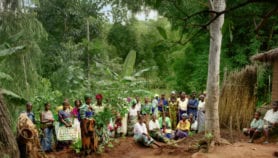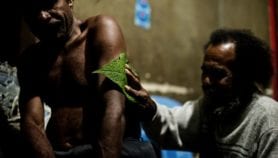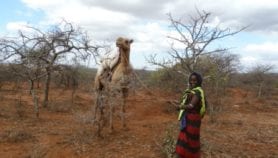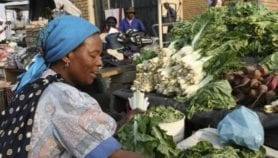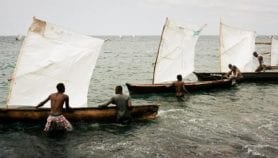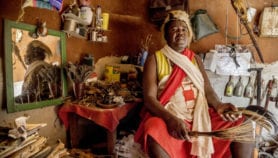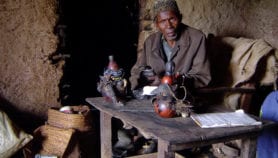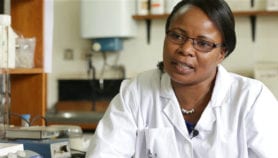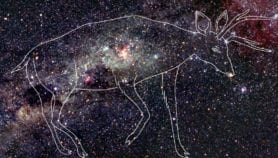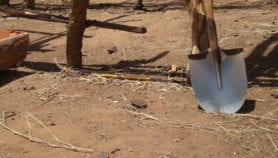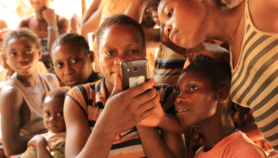By: Mihaela Serbulea
Send to a friend
The details you provide on this page will not be used to send unsolicited email, and will not be sold to a 3rd party. See privacy policy.
Indeed, according to the World Health Organization, most people in the developing world rely mainly on traditional medicine. But, despite their value to communities, the services of traditional healers are largely unrecognised by the formal health sector.
Governments and researchers in several countries have begun to bridge the gap between the two healthcare systems, including using modern science to confirm the effectiveness of ancient remedies. And in some West African countries, where traditional medicine is being integrated into existing health systems, the use of both systems of medicine is actively encouraged.
However, the training that traditional healers undergo still remains largely outside the formal system. According to a 1991 study by the Centre for Research In Traditional Medicine in Fatick, 93.1 per cent of Senegal’s healers are trained in the use of plants by other healers.
The informality of their training has not stopped traditional healers from running hospitals and clinics. The traditional hospital in Keur Massar, for instance, is located in a quiet village not far from the country’s congested capital, Dakar, and consists of about ten huts, each with one or two beds.
From headaches to miscarriages
Four healers see an average of 20 patients every day — mainly elderly people with rheumatic complaints, but also women seeking treatments for illnesses ranging from headaches to miscarriages. The healers also treat conditions such as asthma and tuberculosis. One elderly man waiting to be seen by a healer claims he was cured of hyperthyroidism here.
 The conditions treated, which are listed at the entrance, are as varied as asthma and tuberculosis |
The consultation fee is the equivalent of US$2, with the same amount charged for the medicine and a massage. But this is just a guide price — according to tradition, patients can pay their healer according to how satisfied they are with the treatment. Most patients visit the clinic shortly after they receive their salary, indicating that healthcare is a priority even when it is challenging to make ends meet.
"The ham-ham (traditional knowledge) is very useful, but [it] can be also very dangerous," says Diew.
   Hamady Diew |
The danger, he says, resides not just in the toxicity of the substances used, but also in the spiritual powers invoked. Students therefore have to be selected carefully, from the immediate family. Diew’s uncle chose him over his own three sons; and Diew himself is passing on the knowledge to a nephew and a brother-in-law.
The practitioner and the teacher are responsible for using their knowledge responsibly and ensuring the safety of their patients. Hamady Diew has also offered assistance to university students and even researchers from Belgium, France and the United States who have enquired about his healing methods.
Beneficial and toxic elements
Traditional medicine is also being integrated into the national health plan as a complement to Western medicine in Côte d’Ivoire, where the Ministry of Public Health established a national programme for promotion of traditional medicine in 1995.
One Ivoirian healer helping traditional medicine gain wider acceptance is Axel Avoni Koblan, who began his training in the use of therapeutic plants at the age of ten. Koblan, who holds PhD in philosophy from Cocody University in Abidjan, believes that healers need at least 20 years of training to reliably identify medicinal plants.
This, he says, is because of the close similarity between plant species. Some plants that closely resemble healing plants are actually poisonous. In the case of the ornamental tree Calotropis procera, with its medicinally useful bark but lethal flowers, the same plant has both beneficial and toxic effects.
Koblan describes the oral method of teaching traditional knowledge as "vivid yet logical". For instance, he says, one is taught "to leave early in the morning and to not talk to anyone" in order to gather plants before their active compounds evaporate in the sunlight, rendering them useless.
In addition to the 200 or so medicinal plants used in Senegal, healers prescribe specific amulets containing various substances to ward off ‘evil spirits’ or ‘mechanical obstructions’.
As an educated professional, Koblan tries to lend scientific validity to traditional methods of diagnosis and treatment. He prepares his medicines in a small laboratory next to his consultation and waiting rooms. In collaborating with modern laboratories he documents the cases he treats and cures.
The modern laboratories diagnose diseases such as thrombocytic leukaemia and Koblan treats them using herbs and traditional knowledge. Laboratories collaborate with the healers by providing the biochemical analysis used in diagnosing patients and confirming the effectiveness of the cure.
   Axel Avoni Koblan |
Koblan’s treatments for sterility, diabetes, blood diseases, chlamydia and trichomonas infections, typhoid fever, malaria and even stroke have now been confirmed by rigorous laboratory testing in Abidjan, and he is preparing to submit the results for publication in peer-reviewed journals.
Mutual validation of the healers’ knowledge
Koblan, who is committed to bridging the gap between the practitioners of traditional knowledge and the formal medical establishment, shares this sentiment wholeheartedly.
In developing countries such as Senegal and the Ivory Coast, which are open to Western technology but rooted in their own cultural and social values, traditional and modern medical therapies tend to converge. The result is a symbiotic approach, which links the formal relationship between patient and physician with the more spiritual bond between patient and traditional healer.
The health authorities’ increasing acknowledgement of traditional healers is a step towards offering holistic healthcare for everyone.
Mihaela Serbulea is a postdoctoral fellow at the United Nations University’s Institute of Advanced Studies. One of her main research interests is access to safe and effective healthcare. She investigates ways of integrating traditional medicines in the public health systems of developing countries. For more details please click here.
More on Indigenous
News
Study assesses use of plants in antimalarial therapies
[COTONOU, BENIN] Traditional healers in Benin possess sophisticated knowledge regarding the treatment ...29/01/13


